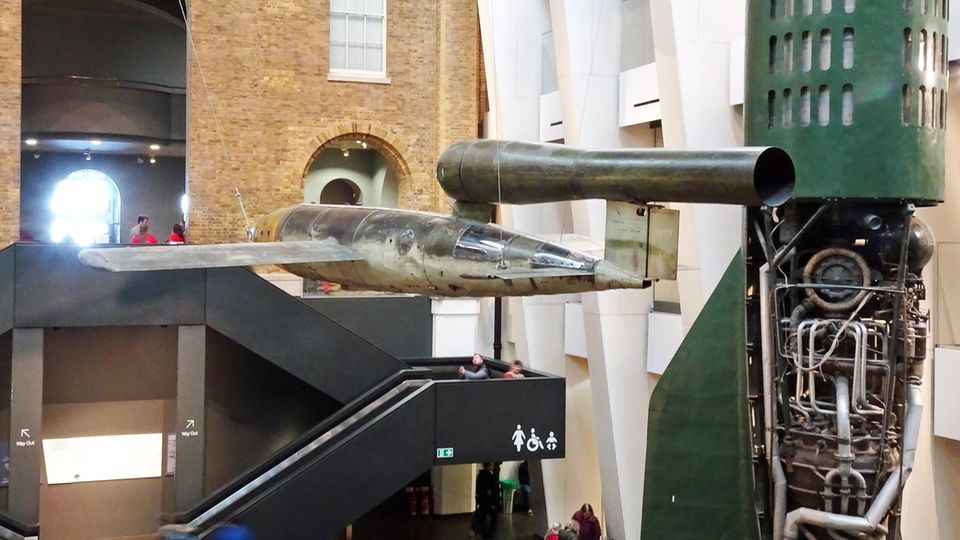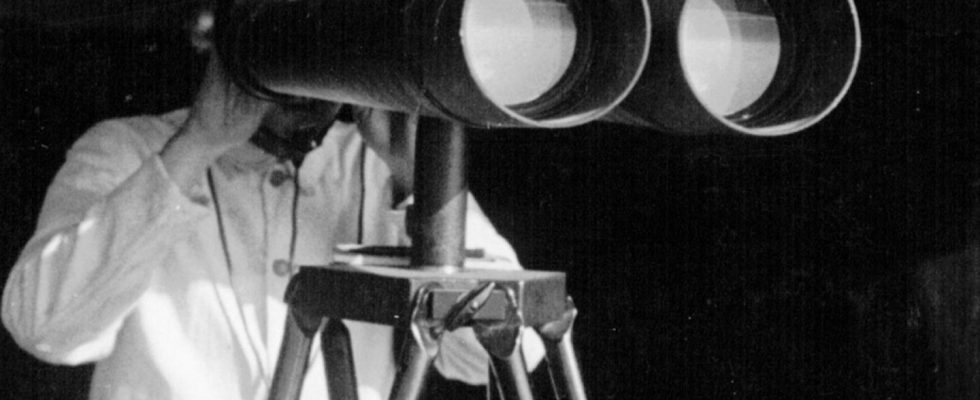With its white chalk cliffs, Cap Blanc-Nez is not only geographically one of the most striking coastal sections in France. For centuries, the rocky outcrop for observing shipping traffic has also been of outstanding strategic importance. Here, at the narrowest point of the English Channel between Calais and Boulogne-Sur Mer, on a clear day you can see from the 132 meter high summit as far as Dover and Folkestone in southern England.
The distance as the crow flies between the mainland and the British Isles is only 34 kilometers. Louis Blériot took off nearby in 1909 for the first successful flight across the English Channel. Just four kilometers east of Cap Blanc-Nez, the “white nose”, the route of the Eurostar trains, which have been running through the Eurotunnel between Paris and London in just over two hours since 1994, disappears underground.
The Eye of the Ranged Battery
Anyone who visits the leafy cap on its hiking trails today cannot miss the many bomb craters. During the Second World War, after the occupation of France, the German Navy maintained a photo observation station with unusually long focal lengths here.
In an inconspicuous wooden barrack below the remains of the bunker was the FK21 office with telephoto lenses whose focal lengths were not given in millimeters or centimeters, but in meters, and whose longest focal length was 42 meters.
In order to document the ship movements in the Strait of Calais, which is hazy even in sunny weather, and off the English coast, infrared-sensitive plate material measuring 13 by 18 centimeters was used.
In addition to a series camera with a three-meter focal length from Zeiss, a telephoto camera with four different focal lengths was used, a special design from the Army Weapons Office. Certain lens combinations could be switched into the beam path of the concave mirror, producing focal lengths of 16, 21, 28 and 35 meters. The entire construction ran on a semicircle of rails and looked similar to a cannon barrel, but was made of sheet metal. The super telephoto with a focal length of 42 meters was mounted as a single camera on top of the large, movable tube.
The images of the English coast show the performance of the lenses, from the Norman castle in Dover to military facilities such as radar systems.
Castle Dover, taken in the summer of 1942 with a focal length of 28 meters.
© Bartels Archive
The exact location of the enemy’s long-range guns was determined using a double exposure: During a night-time bombardment, the breech was opened and in this way the muzzle flash was captured on the plate. After the volley, the camera was closed and, in good weather, exposed with a daytime shot.
The military facility was in close contact with the gun positions of the Lindemann battery and the Todt battery, which was located further southwest at Cap Gris-Nez. This second “gray cape” was one of the most important fortifications of the Atlantic Wall built by the Germans. Targets in England were shelled from here. Today there is this in several bunkers Musee du Mur de l’Atantiquehoused, the striking lighthouse was only built in the late 1950s.
From June 1944 the V1 flies over the canal at night
The photographs taken shortly after the landing of Allied troops in Normandy, D-Day on June 6, 1944, are revealing. In the final phase of the war on the Canal, a new generation of weapons was used for the first time on June 12th, the Fieseler Fi 103 retaliatory weapon, also known as V1 for short.

An example of a V1 in the Imperial War Museum in London.
© Bartels Archive
The unmanned and remotely guided missiles with an 850 kilogram explosive charge were launched at night from 25 meter long catapults in the hinterland or from carrier aircraft, usually with the aim of London. The long exposures from the long-distance cameras at Cap Blanc-Nez not only show the flight paths over the canal as white lines, but the jet engines of the flying bombs trailed a glowing stream of exhaust gases. Rather, the photographs document how the defense system consisting of anti-aircraft guns, fighter squadrons and hundreds of captive balloon barriers was created within a week.
At the same time, the National Socialists used the V1 on the home front as a propaganda tool, as a “weapon of retaliation” for the bombing of German cities by Allied aircraft. Terms such as “miracle weapon”, “radio-controlled bomb” and “pilotless aircraft” circulated in the German press. In the British media, however, there was talk of the devastating effect, because the “robot bombs” hit residential areas, schools and hospitals. Almost 6,000 people died in the attacks in England and around 16,000 were injured. In total, the British registered 9,251 V1 flights, but only 2,419 reached the greater London area. Most of the missiles missed the British capital. The photo evaluations by FK21 showed that in the attacks on London carried out up to September 1, 1944, 80 percent of the V1 were diverted prematurely and destroyed.
20,000 deaths during production
German propaganda kept this quiet. The same applies to the circumstances of production, which was carried out underground in the southern Harz in the final phase of the war by forced laborers from the Mittelbau-Dora concentration camp. Around 20,000 concentration camp inmates died under inhumane working conditions in the tunnels – more than the number of victims claimed by the V1 during operations in England and Belgium.
The photo observation station on Cap Blanc-Nez only existed until September 1944. When Canadian invasion troops approached from land, the unit blew up the unique photo equipment. Only a few photo prints were saved. Today all that can be seen at the location of the photo barracks is a shallow hollow with grass.
Also read:
V2 – Hitler’s sinister weapon of retaliation
Battle of Britain – when the German Luftwaffe lost air supremacy
Follow Me – The flying miracle from the Gauli Glacier

